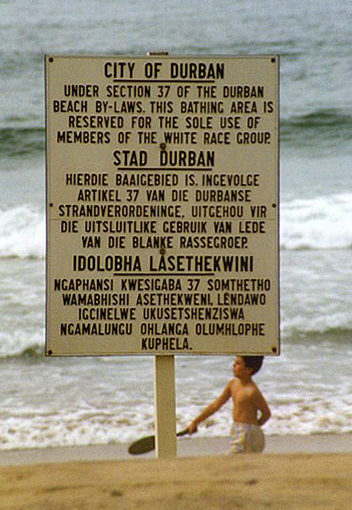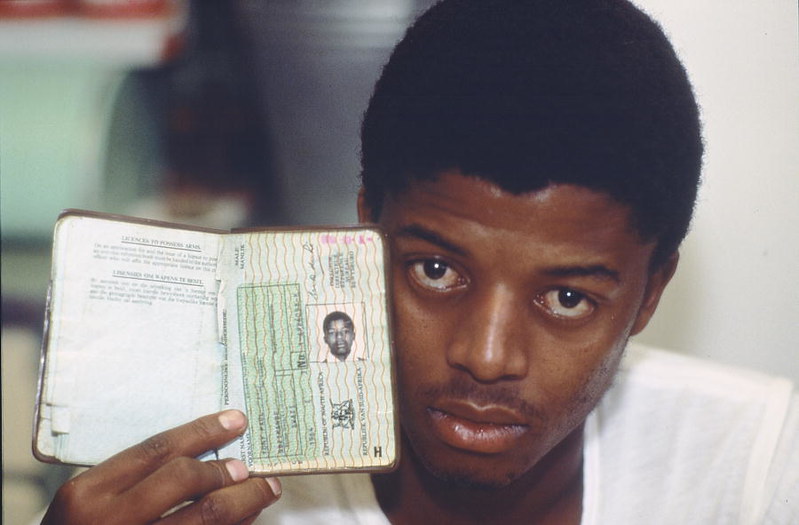Erasure
Apartheid
Apartheid policy governed relationships from 1948 to 1994 between South Africa’s white minority and racialized non-white majority, inclusive of Bantu (Africans), Coloureds (a person whose heritage is both white and African), and other racialized people. Apartheid is an oppressive system that discriminates along racial lines and limits political, economic and social opportunities for racialized South Africans. It became law in South Africa in 1948, and is similar to segregation law in the United States. During the Apartheid system, there were many violent uprisings. Police brutality, unjust imprisonment, abductions and other forms of harm were inflicted on many racialized South Africans. Apartheid ended in 1990-91.
Many racialized immigrants to Canada from South Africa could not immediately (or ever) take advantage of economic opportunities in Canada, because the apartheid education system ensured Black South Africans were trained for positions of servitude, or their credentials were not recognized. While apartheid no longer exists, credits are still not always transferred in Canada for university degrees from African nations, when people move from Africa to Canada.
Free Nelson Mandela
The apartheid system legalized racial segregation, as well as economic and political discrimination against racialized South Africans.


Through the Population Registration Act of 1950, all citizens were required to register under the following categories: Bantu (African), Coloured (Mixed ancestry), Asian (Indian or Pakistani) or white. Housing, infrastructure, schooling and other government-established entities were then organized along racial lines. Non-white people were banned from living with whites, owning land and operating businesses outside of their designated area. This also stripped racialized South Africans of their land ownership. To ensure non-white South Africans did not freely access white neighbourhoods, “pass laws” were enacted. Pass laws required racialized south Africans to carry a passbook to authorize their access to white neighbourhoods for specific reasons.


To ensure political control, Black South Africans were stripped of their citizenship. They were thus excluded from all levels of government and denied the right to full self-government. Separate education standards were established for non-white students. State-run schools prepared racialized students for manual labour and menial jobs that were deemed suitable for non-white children. Further laws banned interracial marriages and relations. The Suppression of Communism Act of 1950 considered any act in opposition to the government an act of communism, punishable under the law. Finally, the Indemnity Act provided police officers with impunity (freedom from punishment) to commit acts of violence, to torture or kill during official duties.